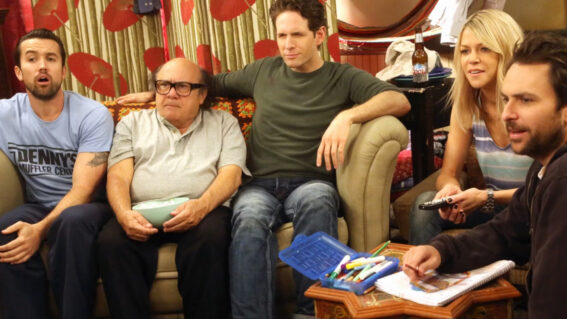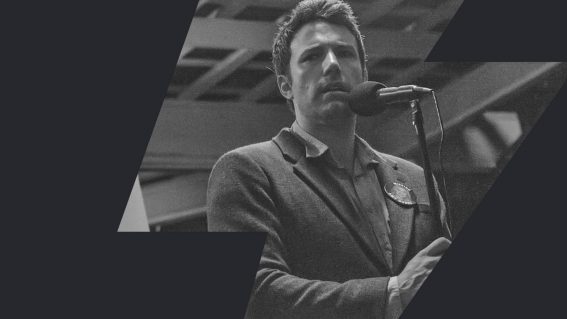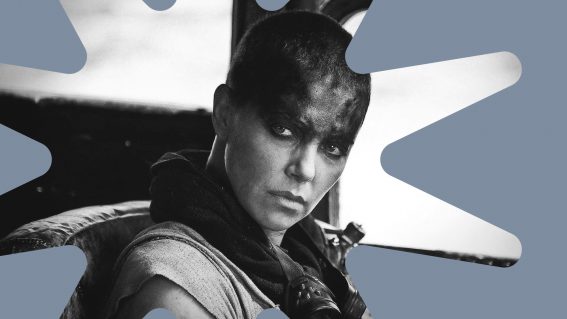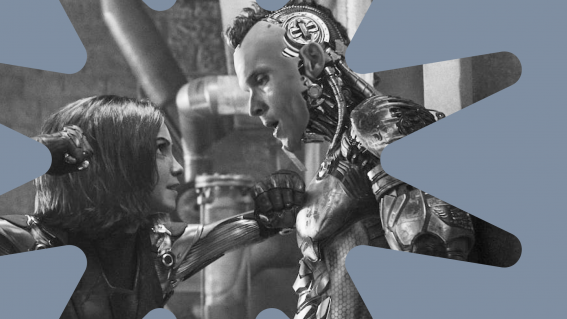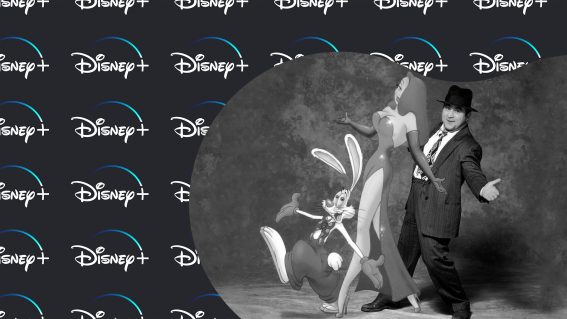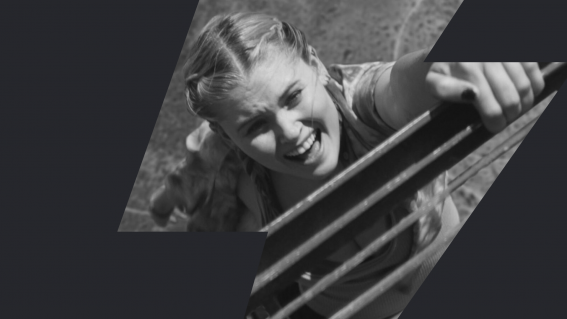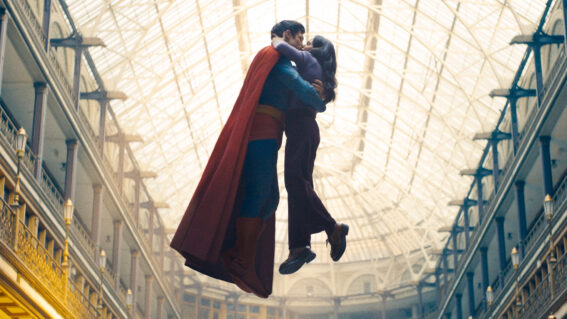Retrospective: 60 years ago, Dr. No was the Big Bang of the Bond franchise
Our introduction to Bond confidently set the franchise’s standards, from gals to guns to orientalist baddies.
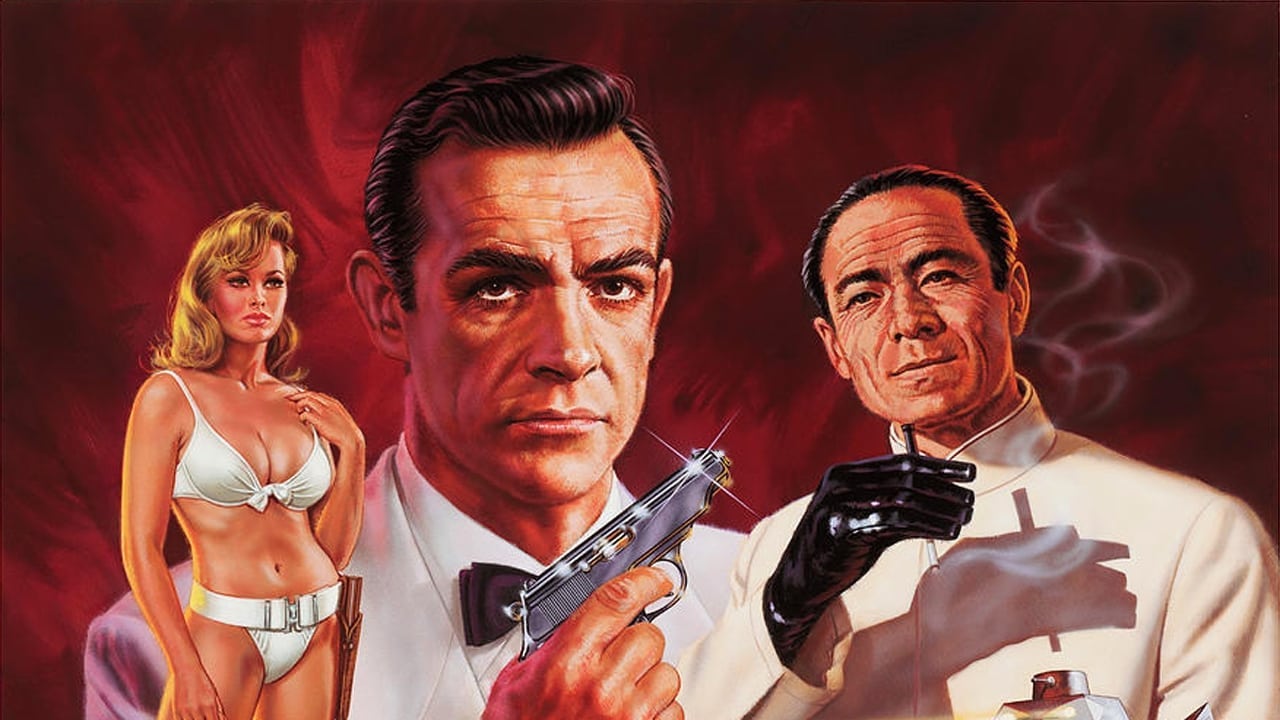
We have no clue who the next Bond will be—but we can go back in time and witness the character’s cinematic origins anytime we like. Eliza Janssen revisits 1963’s Dr. No, to see how many of the big Bond hallmarks were there from the start.
On this day in 1963, American audiences got their first proper introduction to James Bond on the big screen: signature cocktail, catchphrase, weapon and all. Dr. No was considered a successful kick-off to MGM’s enduring adaptations of Ian Fleming’s spy novels, but it’s rarely chosen as any Bond fan’s fave entry—looking back at where it all began, the introductory chapter can feel a little raw and unsophisticated.
With no new lucky bugger singled out as the next Bond performer yet, now might be a nice time to visit day dot of 007’s cinematic career. Here’s how each of the most iconic elements of the Bond mythos first appeared, starting with the original classic title sequence featuring…
The Song
The opening moments of Bond (actually stuntman Bob Simmons!) murdering us in a manner that causes blood to somehow drip into our gun’s barrel proved that MGM knew from the jump that they were establishing something significant. From there, the first ever performance of Monty Norman’s exciting theme tune gets a pretty erratic treatment, with Maurice Binder’s graphic dots go-go-ing across the screen before actual go-go dancers are seen vibing to an unrelated track. Shagadelic, baby.
The last three Bond themes, all quite mopey ballads, have each won the Best Original Song Oscar, but Dr. No’s own unique title tune is nowhere near as grand: a Calypso version of “Three Blind Mice” leads us into the opening assassination cold open. It’s bizarrely quaint and merry, especially after the confidence of that gun barrel sequence and immediately memorable orchestral theme. Bonus musical moment: Bond later sings a little snippet of Jamaican ditty “Under The Mango Tree”, something we can absolutely never picture Dalton or Craig doing.
The Bond
Swarthy, unflappable, and perhaps a little more arrogant than we remember, Sean Connery’s Bond is mid-century machismo incarnate. Modern entries to the franchise have taken care to show Bond as little more gentlemanly and professional than the laissez-faire holidaying killer we got here, but dang is it still impactful to see his introductory hero shot. The very first shot of Connery’s face is when he coolly lights his cigarette after beating Bond Girl No. 1 at Baccarat and announces himself: surname, first name surname.

The film pointedly mentions his recipe for the perfect martini twice, to prematurely assert its iconic status (although any bartender will tell you that shaking the cocktail actually ruins its clarity and flavour). And the opening mission briefing sees Bond swap his favourite Beretta for the Walther PPK that he’d then wield in every other film. (While Bernard Lee would go on to play MI6 head honcho M for the next 10 Bond films, Dr. No’s “Q” Peter Burton, then named “Major Boothroyd”, didn’t stick).
Is he an exceptionally skilled agent, though? In Dr. No his detective work comes across in 10-second long scenes of entering some establishment and getting a new nugget of info instantly: one of his finest gadgets is a strand of hair which he sticks across his door with some saliva to brilliantly prove whether his room’s been invaded. He can also be a bit of a messy lil bitch: he taunts the titular villainous amputee by asking, “does the toppling of American missiles really compensate for having no hands?” Basically, he’s a bit of a playboy, and not the patriotic blockbuster superhero the character would later bloat into, before the recent Daniel Craig films whittled Bond back down to the grittier, more sensible agent he never really was.
The Girls
James Bond typically gets offered a select smorgasbord of women in each of his adventures, each with their own formula-serving purpose: there’s the Decoy Girl, who will either be forgotten or slain early on in the film, the Bad Girl who tries and fails to play Delilah to Bond’s Samson, and the virtuous Good Girl who can somewhat keep up with Bond’s action-man ways. Dr. No set this standard early on, even establishing the playfully horny repartee between Bond and Miss Moneypenny for good measure.
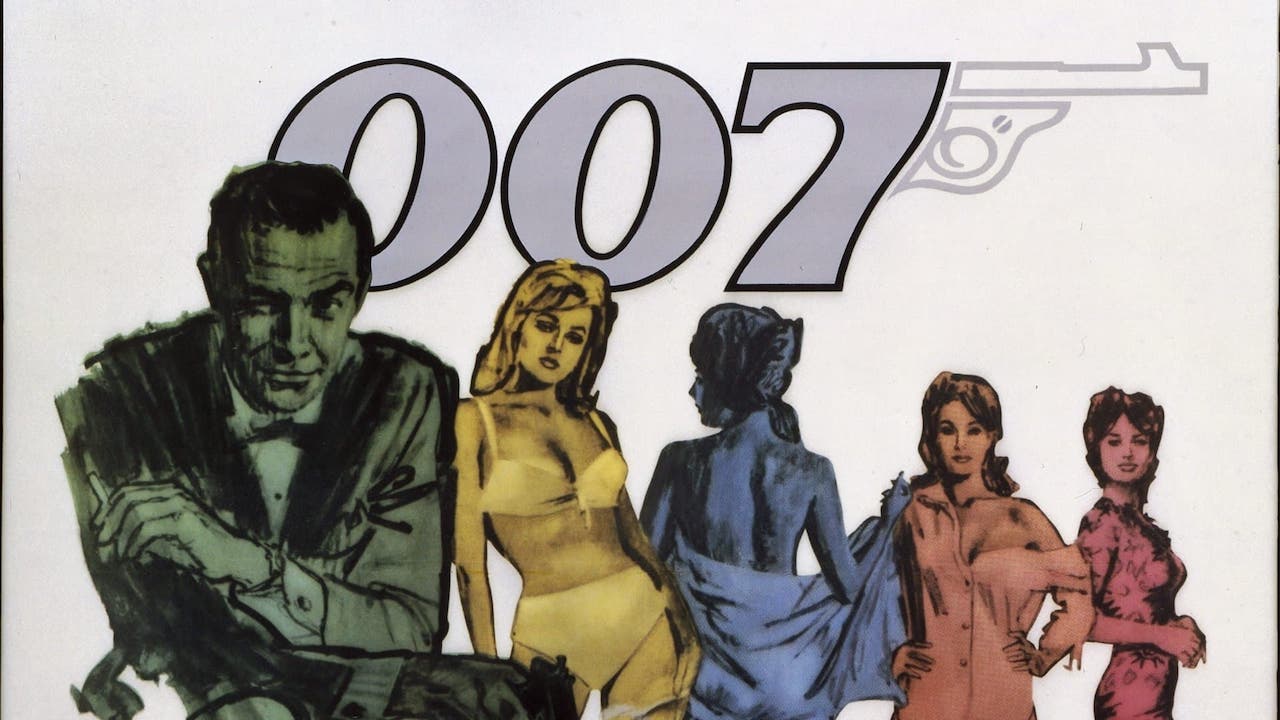
Sylvia Trench (Eunice Gayson) is our Decoy, a sounding board for Bond’s legendary intro whom he barely has time to bang before leaving for his mission in Jamaica. Miss Taro (Zena Marshall) is the Bad Girl who Bond still makes time to bang, even though he knows she’s working for Dr. No—she can’t avoid his charms, I guess, and viciously spits on him as she’s bundled away by the authorities post-coitus.
And then there’s Ursula Andress as the archetypal Bond Girl: she’s got daddy issues, a wacky name (Honey Ryder), a (dubbed) voice like a baby, and she seriously knows how to make an entrance. She washes ashore right at Bond’s feet with a cool knife at her belt that she never gets to use, and even gets the much-repeated final love scene—of Bond and his latest gal being reluctantly rescued while canoodling in their life raft. Rewatching Dr. No, you might be shocked that Andress only arrives in the final act, and has absolutely no purpose in the spy mission as it unfolds. She reckons her dad might’ve been slain by No’s nuclear scheming, but that’s only important for the purposes of fuelling Bond’s paternalistic libido.
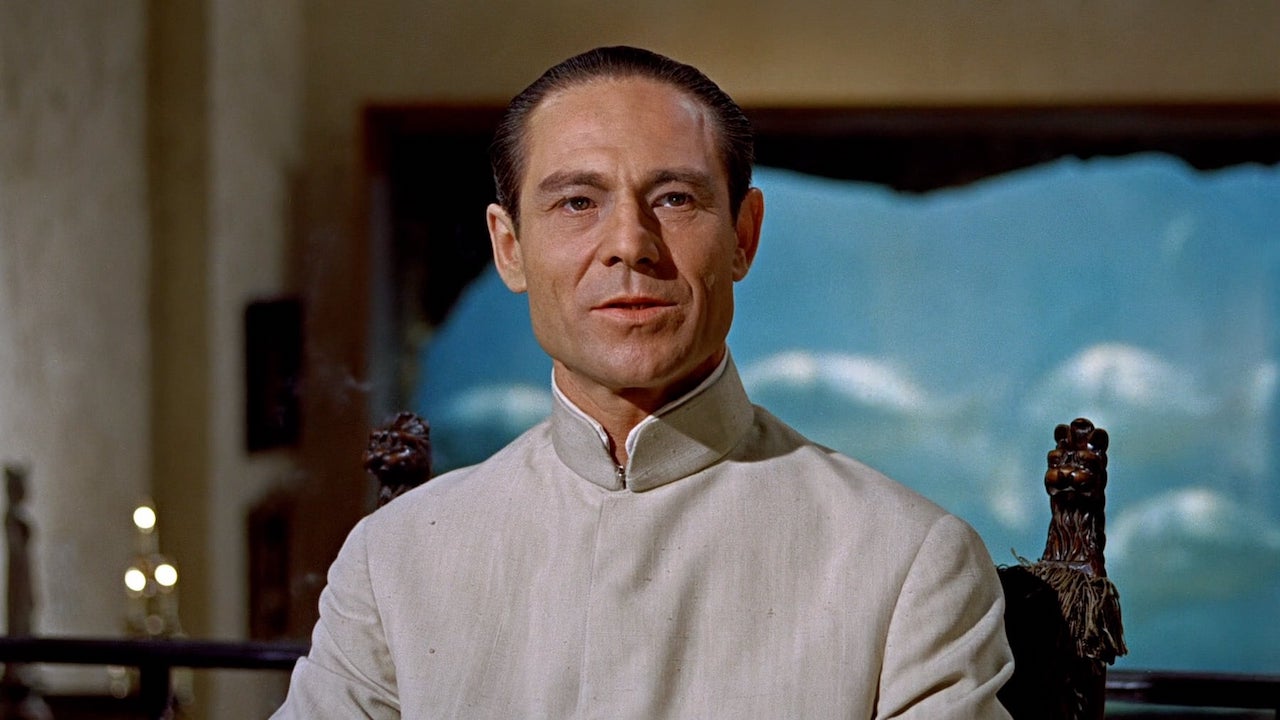
The Bad Guy
Dr. No checks off two of the most pivotal Bond villain requirements right outta the gate: orientalism (or more broadly, an otherised, foreign evil) and some “sinister” disability. Joseph Wiseman plays the supergenius Julius No in wince-inducing yellowface makeup but thankfully without any hokey accent, and his robotic hands are ultimately his downfall. Also the fact that his whole team was just blithely watching their Cape Canaveral rocket sabotage footage while Bond, lazily disguised as a henchman, threw around some levers behind their backs and fucked up their whole plan.
The villain isn’t ever much of a threat to Bond, but he does swiftly introduce the existence of SPECTRE—an ongoing antagonistic force even in the most recent films—and the enduring theme of Bond’s sheer masculine virtue overpowering wimpy intellect. He sends countless skinny mooks after the guy, even stooping to such playground tactics as dropping a tarantula into Bond’s hotel room. Bond whacks it to death with a shoe. These days we only get Oscar-winners to play the bad guys, and the explosions they set off literally break world records.
The Lair
Here, finally, is the most immaculate example of what would make the Bond franchise feel larger than life so early on: production designer Ken Adams’ groovy evil lair, a radioactive laboratory and mod underground hotel in one. With a budget of only $1 million USD (compared to No Time To Die’s estimated $300 million!!!), Adams and his team didn’t have much to work with in creating a set that takes Dr. No’s Jamaican intrigue to otherworldly new heights—but by gum did they get the job done. The film’s second act is bogged down in chatty back-and-forth about No’s mysterious Crab Island: Bond and his new buddies know that they need to get there for about an hour, but the hero is bizarrely complacent about it, perhaps needing one last sexual partner to drum up the necessary energy.
Pointlessly joined by Honey Ryder and ready to thwart a radio beam demonstrating SPECTRE’s power, Bond busts into No’s lair…and is put through an Austin Powers-esque pampering, forcefully showered and shown to a gorgeously groovy private room. The doors mechanically go zhoozh and a hilarious rear-projected aquarium stuns Bond and Ryder with obscenely huge fish. “What we didn’t realise was because we didn’t have much money the only stock footage they could buy was of goldfish-sized fish”, Adams sheepishly explained later, “so we had to blow up the size and put a line in the dialogue with Bond talking about the magnification”. It’s gloriously surreal, and in perhaps the only Bond mystery to take place primarily in one country and location, it completely changes the tone and momentum of the snoozy spy plot.
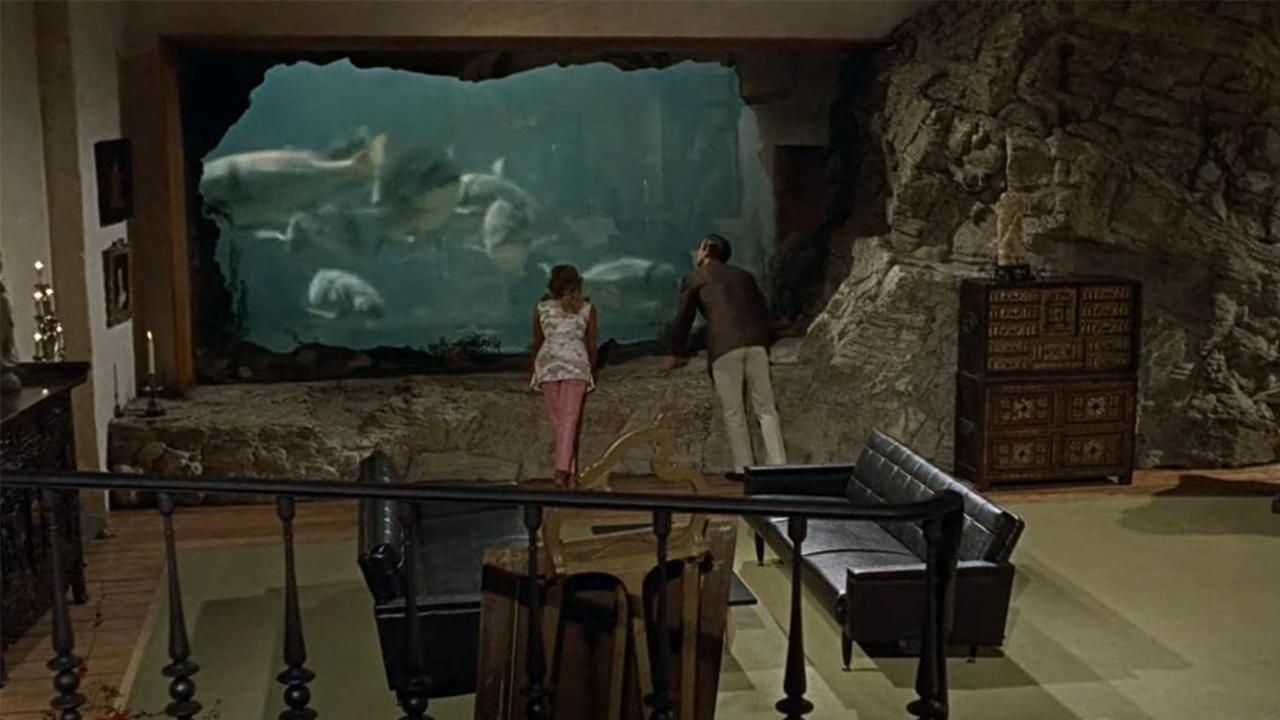
Dr. No isn’t a poor first effort in what would become a staggeringly successful saga: it’s mostly surprising to watch for all the bits that the Bond team got amazingly right the first time around. Its raunchy asides might surprise new viewers, too, with Connery’s rakish expressions constantly proving that Bond’s not thinking with his head so much as on his…gun. The Vatican’s condemnation that Dr. No was “a dangerous mixture of violence, vulgarity, sadism and sex” apparently only boosted cinema attendance, so it clearly didn’t turn off audiences at the time too much.
Plenty of the old Bond themes and sauciness have wisely been modernised, but we can always go back and see this confident, breezy beginning—and that enviable lair. I really want to live there.






